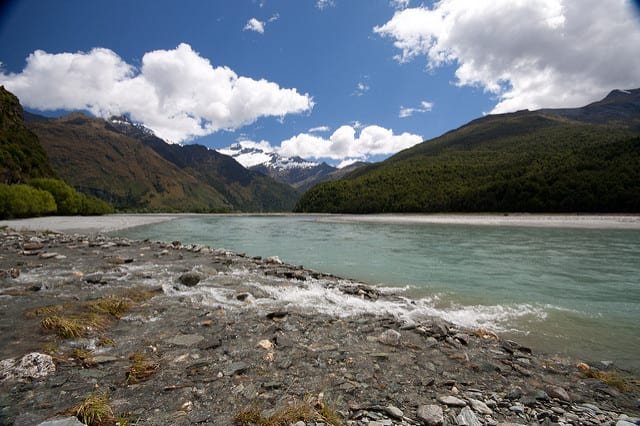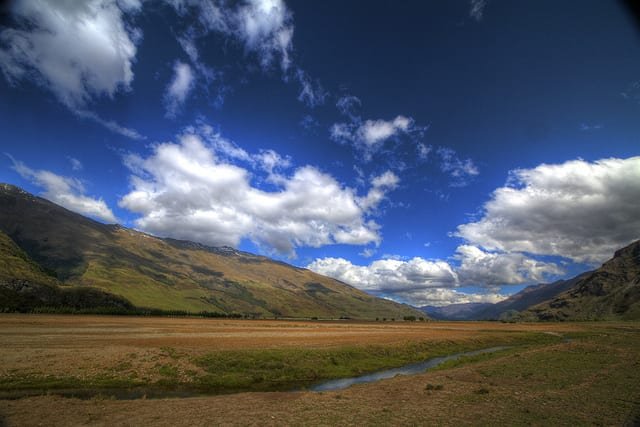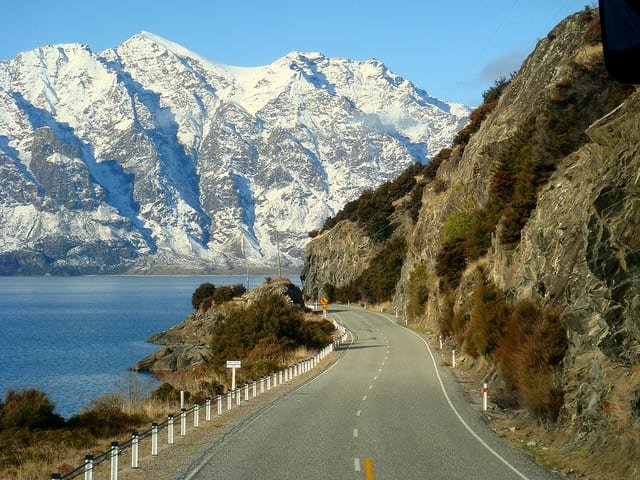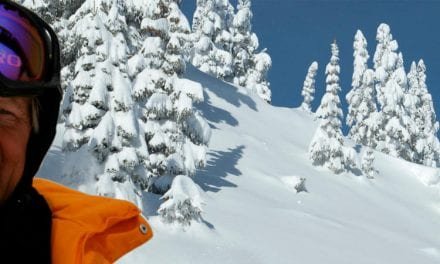By Dan Thompson
There is something magic about being alone on the road, exploring faraway horizons and walking the paths less travelled. New Zealand is a famous hiking, or as the locals call it – “tramping” destinations. Its rich and variable environments offer all flavours of adventures.
Despite its active tourism, the vast majority of the New Zealand wilderness remains untouched – you can spend days without meeting any other person. In addition to that, it is very easily accessible – some truly incredible routes start just a few kilometres away from major roads. Finally, when tramping in New Zealand, you are likely to experience it all – precious meadows, steep mountain passes, luscious forests and majestic glaciers.

Makarora River, Image Credit: Neil Stead (https://www.flickr.com/photos/nstead/)
The Great Walks
Some of the most famous tourist hiking destinations in New Zealand are called The Great Walks – Milford track, Kepler track, Tongariro Northern Circuit, Heaphy Track and five more jewels of scenery. The Great Walks are exceptionally well maintained and suitable for complete hiking beginners. These tracks are set in some of the most impressive locations in New Zealand. The backcountry huts on the routes are well equipped and built to fit large numbers of people. Given the combination of impressive scenery and well developed routes, these are incredibly popular and require booking months in advance.
New Zealand Backcountry Hut system
One of the best aspects of hiking in New Zealand is its superb hiking infrastructure. Department of Conservation does an exceptional job creating and maintaining trails, backcountry huts and providing all the hiking information. While the Great Walk huts are relatively costly and require booking in advance, the majority of the huts across the country are very cheap to stay in and are rarely full. You can either pay for each night separately or just buy a backcountry pass that is just 122 NZD for the entire year. Never forget to pay your hut fees, as it supports the important work DOC is doing.

Matukituki Valley, Credit: Matt Dillon (https://www.flickr.com/photos/matt_dillon/)
Department of Conservation
Make it a tradition to visit a local Department of Conservation office before starting your hike. Chat with rangers about the track/route you’re about to venture into, check the weather forecast, get a map (if you don’t already have one), and, most importantly – fill in an intentions form. The Department of Conservation together with Search and Rescue have this amazing system, where if you don’t come back by your set date, they go out searching for you based on the route you described. Talk to the DOC ranges more about the details.
Here are just several examples of hiking routes of varying difficulty and duration, offering the best of New Zealand with less people and a more special wilderness experience.
West Matukituki hiking
Suitable for all levels of experience and fitness, there are several options in the West Matukituki valley, depending on what are you looking for in your trip. The easiest option is a hike to the Mt Aspiring hut, which is 3 hours from the Raspberry Creek car-park on mostly flat terrain. The West Matukituki valley is breath-taking – cosy meadows surrounded by steep ice and rock peaks and glaciers with Mt Aspiring itself crowning it all. The trail follows the West Matukituki River and crosses some local forests and dramatic bridges.
If you are keen for a challenge, you can continue on towards the French Ridge hut, that is another 4-5 hours further from the Mt Aspiring hut and almost a kilometre up in elevation gain. It’s a strenuous climb through native forest, followed by an exposed winding single-trail above the bush line. French Ridge is an alpine hut, and is mainly used by climbers as a base camp for climbing Mt Aspiring. The views are absolutely breath-taking and it’s definitely worth the effort. Stay the night at the French ridge hut or Mt Aspiring hut and go up for a day trip.
Gillespie pass track
Gillespie pass track begins from nearby Makarora Township and is suitable for moderately experienced parties. The route is beautiful with its variable terrain and the surrounding mountain ranges. To begin the track, you will need to cross the Makarora River. It is often too high, requiring a ride with a jet-boat that you can arrange on the spot.
The first 20 km of the route goes through beautiful flat valleys occasionally climbing into the forest. Enjoy the trail until you reach the Young hut; stay the night and recover your strength for climbing over the Gillespie pass the next day. The trail climbs steep up with incredible mountain sceneries unfolding, after the pass it descends into a native forest and some spectacular meadows. Stay the night at the Siberia hut – possibly one of the most beautiful well hidden gems of New Zealand –cosy, but surrounded by grand alpine peaks.
In total the route is 58 km long and takes 3-4 days if the weather is good. You may require an ice axe if there is snow on the pass.

General New Zealand, Credit: CameliaTWU ( https://www.flickr.com/photos/cameliatwu/)
Five passes route – for experienced hikers only
Five passes route is a challenging hiking route in Mt Aspiring and Fiordland National Parks, requiring navigation skills and a tent (there are no huts on the way). It usually takes 3-5 days, but the region is highly susceptible to prolonged rain storms that make some of the rivers impassable. It is advisable to wait for at least a few days of good weather window and have fast long days (to avoid getting trapped in bad weather).
The route begins at the Routeburn route, and quickly takes a right turn to the forest towards the Sugarloaf pass (you will see a sign).The route then passes the Park pass, Cow saddle and scrambles through steep-ish rocky rugged terrain towards Fiery Col. This is where the most exciting of the scenery unfolds – Olivine ledges are out of this world! Camp here or continue forward towards the last pass – Fohn saddle and do not forget to stop at the Fohn lakes just below. After Fohn saddle the route drops steep through tussock into the Beans Burn river valley and crosses a forest towards the end of the route.
It’s an incredible trip, but do make sure to have some serious navigation skills, plenty of food supplies and a reliable tent (also, ideally, a reliable hiking buddy). The route can be done from either direction – the link above describes it from the other direction.
Some gear tips
One of the most beautiful aspects of hiking and being outdoors is the simplicity of the experience. Have a well selected gear kit will make your life easier, when on the road. It all begins with a reliable pack; choose something functional, lightweight and comfortable. 40-50 litre pack is enough for 2-3 day trips, but you might want to get something larger 60-75 litres for more challenging and longer trips. Choose items that will serve a specific function on your trip, and only bring the most necessary gear. Never forget a waterproof layer, when hiking in New Zealand, as well as some warm layers, a head torch and a first aid kit. Finally, always take a few days extra more of food than you think you’ll need.
In conclusion, do not be afraid to explore – New Zealand is perfect for it. If ever in doubt, just consult the DOC rangers – they tend to be extremely knowledgeable and very helpful; they will be able to advise you, based on your level of experience, gear, weather conditions and time available.
About The Author
I’m Dan Thompson, and I’m the Editor in Chief of True North Athletics. I’m also an avid adventurer, digital nomad and traveler. I enjoy all types of outdoor sports, a good golf tan, and spontaneous weekend trips. I currently live in Brazil where I can be found frequently hiking the rain forest around my city!























